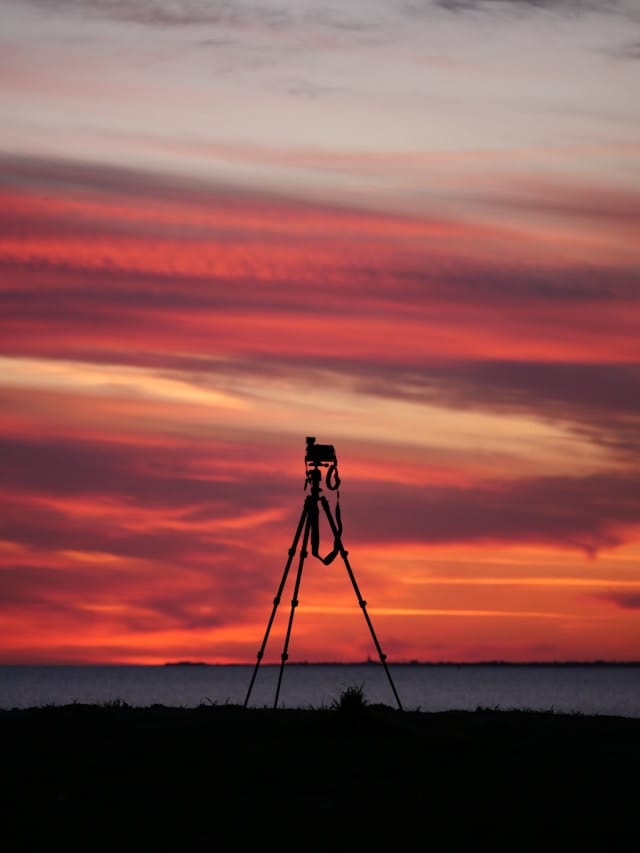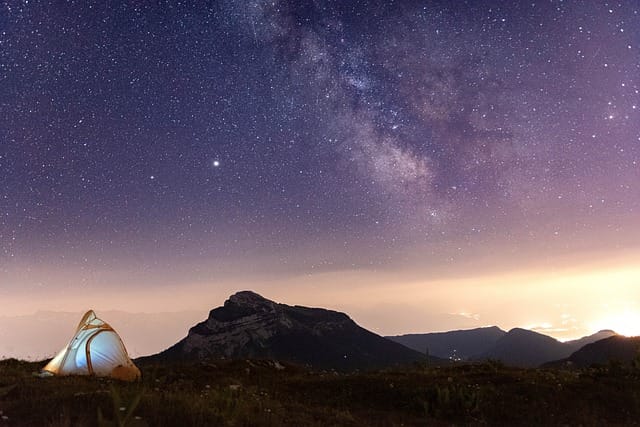Capturing a breathtaking Milky Way galaxy photo is a dream for many photography enthusiasts and stargazers. The vastness of our galaxy, with its shimmering stars and captivating cosmic features, creates a beautiful subject for any photographer. However, photographing the Milky Way is not simply about pointing your camera at the night sky. It requires a deep understanding of various techniques, optimal conditions, and proper equipment to create stunning images. This comprehensive guide will provide you with 10 essential tips to help you take striking Milky Way galaxy photos that leave viewers in awe.
The Beauty of Milky Way Galaxy Photos
The Milky Way galaxy, our cosmic home, has fascinated humanity for centuries. It is a stunning visual spectacle that captures the imagination, inspiring art, literature, and science alike. A well-captured Milky Way galaxy photo offers a glimpse into the beauty of our universe and can evoke a sense of wonder and curiosity about the cosmos.
However, photographing the Milky Way presents several challenges. Factors such as light pollution, weather conditions, and the right equipment can significantly affect your ability to capture this celestial wonder. This article will delve into essential tips that will guide you in creating breathtaking Milky Way galaxy photos. Whether you are a beginner or an experienced photographer, these insights will enhance your skills and help you produce awe-inspiring images of our galaxy.
What You Will Learn
- The best times and locations for capturing the Milky Way
- Essential equipment needed for astrophotography
- Techniques for composing and capturing stunning images
- Post-processing tips to enhance your Milky Way photos
With these insights, you will be well-equipped to embark on your astrophotography journey and create beautiful Milky Way galaxy photos that impress your audience.
1. Timing is Crucial for Milky Way Galaxy Photos
To capture the best Milky Way galaxy photo, timing is everything. The ideal time to photograph the Milky Way is during the new moon phase, when the moon’s light is minimal, allowing the stars to shine brightly in the night sky.
Seasonal Considerations
The visibility of the Milky Way changes throughout the year. Generally, the core of the Milky Way is most visible from late spring to early autumn. Here’s a breakdown:
- Spring (March to May): The Milky Way begins to rise in the eastern sky.
- Summer (June to August): The core is fully visible and can be seen throughout the night.
- Fall (September to November): The core starts to set earlier, but it can still be captured.
- Winter (December to February): The core is less visible, but parts of the Milky Way can still be photographed.
Planning Your Shoot
Using astronomy apps like Star Walk or SkySafari can help you track the position of the Milky Way, allowing you to plan your shooting sessions effectively. This ensures that you know exactly when and where to set up your camera for optimal results.
2. Choose the Right Location for Milky Way Galaxy Photos
Selecting the right location is critical for capturing stunning Milky Way galaxy photos. Light pollution from cities can hinder your ability to see the stars clearly, so finding a dark sky location is essential.
Best Locations for Milky Way Photography
- National Parks: Many national parks are designated dark sky areas and provide stunning landscapes for your photos.
- Remote Areas: Look for open fields, deserts, or mountain tops away from urban lights.
- Local Astronomy Clubs: Many clubs organize stargazing events in areas with minimal light pollution.
Tips for Location Scouting
- Visit potential locations during the day to scout for interesting foreground elements that can enhance your Milky Way galaxy photo.
- Check light pollution maps (like the Dark Site Finder) to find the darkest areas near you.
- Aim for locations with a clear view of the horizon and minimal obstructions.
3. Use the Right Equipment for Milky Way Galaxy Photos
To capture breathtaking Milky Way galaxy photos, having the right equipment is crucial. Here’s what you’ll need:
Camera
A DSLR or mirrorless camera is ideal for capturing Milky Way images. Look for a camera with good low-light performance and high ISO capabilities.
Lenses
Wide-angle lenses (14mm to 24mm) are preferred for astrophotography. These lenses allow you to capture more of the sky and create dramatic compositions.
Tripod
A sturdy tripod is essential to keep your camera stable during long exposures. Avoid flimsy tripods that can shake easily in the wind.
Additional Equipment
- Remote Shutter Release: This allows you to take photos without touching the camera, minimizing vibrations.
- Headlamp: A red light headlamp is helpful for navigating in the dark without ruining your night vision.
- Extra Batteries: Long exposure photography can drain your camera’s battery quickly, so have spares on hand.
4. Master Your Camera Settings for Milky Way Galaxy Photos
Understanding your camera settings is vital for capturing the perfect Milky Way galaxy photo. Here are the key settings to focus on:
Exposure Settings
- Aperture: Use a wide aperture (f/2.8 or wider) to allow as much light in as possible.
- ISO: Start with an ISO of 1600 to 3200. Experiment to find the best balance between noise and exposure.
- Shutter Speed: Use the 500 rule to determine your maximum shutter speed. Divide 500 by your lens focal length to avoid star trails (e.g., for a 24mm lens, use a shutter speed of about 20 seconds).
Focusing
Focusing at night can be challenging. Use manual focus to set your lens to infinity. You can also focus on a bright star or distant light using live view, ensuring it appears sharp in your preview.
5. Compose Your Milky Way Galaxy Photos Thoughtfully
Composition plays a significant role in capturing stunning Milky Way galaxy photos. Here are some tips for effective composition:
Rule of Thirds
Use the rule of thirds to create a balanced composition. Place the Milky Way along one of the lines or intersections to draw the viewer’s eye.
Incorporate Foreground Elements
Including interesting foreground elements (like trees, mountains, or buildings) can add depth and context to your Milky Way galaxy photo. Look for subjects that will complement the sky.
Experiment with Angles
Try different angles and perspectives to find the most captivating composition. Getting low to the ground or shooting from a higher vantage point can yield unique results.
6. Post-Processing Your Milky Way Galaxy Photos
Post-processing is an essential step in enhancing your Milky Way galaxy photos. Software like Adobe Lightroom or Photoshop can help you bring out the best in your images.
Basic Edits
- Adjust Exposure: Make sure the stars are bright without being blown out.
- Increase Contrast: This helps the Milky Way stand out against the darker sky.
- Adjust White Balance: Experiment with different temperatures to achieve the desired mood in your photo.
Advanced Techniques
- Stacking: Combine multiple exposures to reduce noise and enhance detail.
- Noise Reduction: Use noise reduction tools to minimize graininess, especially at high ISO settings.
- Sharpening: Apply sharpening to bring out the details in the stars.
7. Understand Light Pollution and Its Effects
Light pollution can significantly impact your ability to capture stunning Milky Way galaxy photos. Knowing how to deal with it is crucial.
Identifying Light Pollution
Light pollution comes from urban areas, streetlights, and other artificial light sources. It creates a bright haze in the sky that obscures the stars.
Minimizing Light Pollution
- Choose Dark Locations: As mentioned earlier, select remote areas with minimal light pollution for the best results.
- Use Filters: Light pollution filters can help reduce the effects of artificial light on your images.
8. Explore Different Perspectives
Experimenting with different perspectives can lead to unique Milky Way galaxy photos. Here are some ideas:
Vertical Shots
Try capturing vertical shots of the Milky Way rising over a landscape or horizon. This can create a dramatic effect and showcase the height of the galaxy.
Panoramic Views
Consider stitching multiple images together to create a panoramic view of the Milky Way. This approach allows you to capture more of the galaxy and surrounding landscape.
Time-lapse Photography
Creating a time-lapse of the Milky Way can yield stunning results. This technique allows you to capture the movement of stars over time, creating dynamic and engaging visuals.
9. Know the Safety Considerations
When photographing the Milky Way, safety should always be a priority. Here are some tips to ensure a safe experience:
Bring a Friend
Whenever possible, go stargazing with a friend. This adds an extra layer of safety and makes for a more enjoyable experience.
Be Aware of Your Surroundings
When shooting in remote locations, be mindful of your surroundings. Avoid wandering too far from your vehicle and be cautious of wildlife.
Prepare for the Weather
Check the weather forecast before heading out and dress appropriately. Cold temperatures can affect your comfort and camera equipment, so bring layers and protect your gear.
10. Join Astrophotography Communities
Connecting with other astrophotographers can provide valuable insights and support as you embark on your journey to capture stunning Milky Way galaxy photos.
Online Communities
Join online forums, social media groups, or photography websites to share your work, ask questions, and learn from others.
Local Meetups
Look for local astrophotography meetups or workshops in your area. These events can be a great opportunity to learn from experienced photographers and improve your skills.
Conclusion: Capturing Stunning Milky Way Galaxy Photos
In conclusion, capturing stunning Milky Way galaxy photos requires planning, the right equipment, and a willingness to experiment with different techniques. By understanding the best times and locations for shooting, mastering your camera settings, and honing your composition skills, you can create breathtaking images of our galaxy.
Remember, the beauty of the Milky Way is not just in the stars themselves but in the stories and emotions they evoke. Each Milky Way galaxy photo is an opportunity to share your unique perspective on the cosmos. So gather your gear, head out to a dark location, and start capturing the wonders of the Milky Way.






